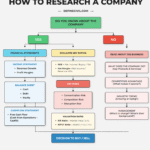
Understanding the Risks of Untreated ADHD in Girls
Attention Deficit Hyperactivity Disorder (ADHD) is a neurodevelopmental disorder that affects both children and adults. While it is commonly associated with boys, girls can also be diagnosed with ADHD. However, the symptoms of ADHD in girls are often different from those in boys, making it more challenging to diagnose. When left untreated, ADHD in girls can lead to various risks that can impact their mental, emotional, and social well-being.
Risk 1: Emotional Difficulties and Mental Health Issues
Girls with untreated ADHD are at a higher risk of developing emotional difficulties and mental health issues. They may experience anxiety, depression, and mood swings, which can further exacerbate their ADHD symptoms. Additionally, the pressure to conform to traditional feminine norms can make it more challenging for girls with ADHD to express their emotions and seek help.
Demanding social expectations
Societal expectations of girls to be nurturing, empathetic, and quiet can make it difficult for them to express their ADHD symptoms. Girls with ADHD may feel pressure to hide their symptoms, leading to feelings of guilt, shame, and inadequacy. These feelings can further contribute to emotional difficulties and mental health issues.
Increased risk of self-harming behaviors
Untreated ADHD in girls can also increase the risk of self-harming behaviors, such as cutting or suicidal thoughts. Girls with ADHD may engage in these behaviors as a way to cope with their emotions, anxiety, or depression.
Risk 2: Academic Underachievement and Dropping Out
Girls with untreated ADHD are at a higher risk of academic underachievement and dropping out of school. ADHD symptoms such as inattention, disorganization, and impulsivity can make it challenging for girls to complete assignments, follow instructions, and participate in class.
Poor academic performance
Girls with untreated ADHD may struggle with poor academic performance, leading to decreased self-esteem, frustration, and disappointment. They may feel like they are not living up to their potential, which can further exacerbate their ADHD symptoms.
Increased risk of dropping out
The risk of dropping out of school is higher for girls with untreated ADHD. They may feel overwhelmed by their schoolwork, leading to feelings of frustration and hopelessness. Dropping out of school can have long-term consequences on their future career prospects and overall well-being.
Risk 3: Social Isolation and Difficulty with Relationships
Girls with untreated ADHD are at a higher risk of social isolation and difficulty with relationships. ADHD symptoms such as impulsivity and inattention can make it challenging for girls to form and maintain relationships.
Difficulty with friendships
Girls with untreated ADHD may struggle with forming and maintaining friendships. They may have difficulty with initiating or maintaining conversations, leading to feelings of loneliness and isolation.
Difficulty with romantic relationships
Girls with untreated ADHD may also struggle with romantic relationships. They may have difficulty with intimacy, communication, and emotional regulation, leading to feelings of frustration and disappointment.
Risk 4: Increased Risk of Physical Health Problems
Girls with untreated ADHD are at a higher risk of physical health problems, such as sleep disturbances, obesity, and substance abuse.
Sleep disturbances
Girls with untreated ADHD may experience sleep disturbances, such as insomnia or daytime sleepiness. These sleep disturbances can further exacerbate their ADHD symptoms, leading to a cycle of fatigue and decreased productivity.
Obesity and related health problems
Girls with untreated ADHD may also be at a higher risk of obesity and related health problems, such as diabetes and heart disease. ADHD symptoms such as impulsivity can lead to poor eating habits and a sedentary lifestyle.
Risk 5: Increased Risk of Substance Abuse
Girls with untreated ADHD are at a higher risk of substance abuse, including tobacco, alcohol, and illicit substances.
Self-medicating with substances
Girls with untreated ADHD may turn to substances as a way to self-medicate their symptoms. They may use substances to calm their nerves, improve their focus, or increase their energy levels.
Increased risk of addiction
The risk of addiction is higher for girls with untreated ADHD. They may be more susceptible to the effects of substances, leading to a cycle of addiction and dependence.
Conclusion
ADHD in girls is a serious condition that requires attention and treatment. When left untreated, ADHD can lead to various risks that can impact their mental, emotional, and social well-being. It is essential for parents, educators, and healthcare professionals to recognize the symptoms of ADHD in girls and provide them with the support and treatment they need.
Seeking Help
If you suspect that a girl has ADHD, it is essential to seek help from a qualified healthcare professional. A comprehensive evaluation and treatment plan can help alleviate the symptoms of ADHD and reduce the risk of related complications.
Early detection and treatment
Early detection and treatment are critical in managing ADHD symptoms and reducing the risk of related complications. By seeking help early, girls with ADHD can receive the support and treatment they need to thrive in school, relationships, and life.
Additional Resources
If you are concerned about ADHD in girls, here are some additional resources that can help:
Organizations:
- CHADD (Children and Adults with Attention Deficit/Hyperactivity Disorder)
- ADD Association
- National Alliance on Mental Illness (NAMI)
Online resources:
- Centers for Disease Control and Prevention (CDC)
- American Academy of Pediatrics (AAP)
- National Institute of Mental Health (NIMH)
 What is ADHD?
What is ADHD?
ADHD is a neurodevelopmental disorder affecting both children and adults, characterized by inattention, hyperactivity, and impulsivity.
Is ADHD more common in boys than girls?
While ADHD is often associated with boys, girls can also be diagnosed with ADHD. Symptoms in girls are often different, making diagnosis more challenging.
What are the emotional risks associated with untreated ADHD in girls?
Untreated ADHD in girls can lead to emotional difficulties, mental health issues like anxiety and depression, and an increased risk of self-harming behaviors.
How do societal expectations impact girls with ADHD?
Societal expectations can make it hard for girls with ADHD to express their symptoms and seek help, leading to feelings of guilt, shame, and inadequacy.
What academic challenges do girls with untreated ADHD face?
Girls with untreated ADHD may struggle with poor academic performance, have difficulty completing assignments, and are at higher risk of dropping out of school.
How does untreated ADHD affect social relationships in girls?
Untreated ADHD can lead to social isolation and difficulty forming and maintaining friendships and romantic relationships.
What physical health risks are associated with untreated ADHD in girls?
Girls with untreated ADHD are at risk for sleep disturbances, obesity, and related health problems.
Why are girls with untreated ADHD at risk of substance abuse?
Girls with untreated ADHD may turn to substances as a way to self-medicate, leading to a higher risk of addiction.
What should you do if you suspect a girl has ADHD?
Seek help from a qualified healthcare professional for a comprehensive evaluation and treatment plan.
Why is early detection and treatment important for girls with ADHD?
Early detection and treatment can manage ADHD symptoms, reducing the risk of related complications and helping girls thrive.

















